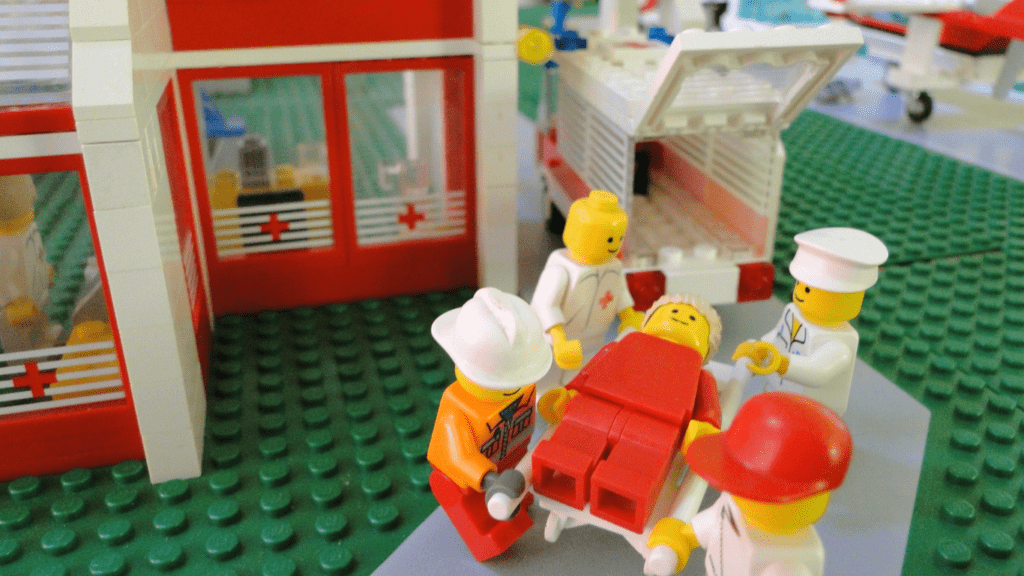Understanding the Basics of Brick Building
Brick building is more than stacking blocks; it’s a methodical, creative process. New gamers should grasp the fundamentals to fully enjoy the experience.
What Is Brick Building in Gaming?
Brick building in gaming refers to creating structures using digital building blocks. These blocks are usually uniform in shape, mimicking physical bricks or LEGO pieces.
Popular games like Minecraft and LEGO Worlds exemplify this concept. Gamers place bricks in various configurations, forming everything from simple homes to complex castles. The process requires imagination, planning, and a keen sense of spatial awareness.
Core Concepts for Beginners
New gamers should understand a few core concepts:
- Grid System:
Most games use a grid system to place bricks. This ensures precision and symmetry in building. For instance, Minecraft’s grid comprises cubes that fit perfectly next to one another. - Resource Management:
Collecting and managing resources is crucial. Players gather materials like wood, stone, and metal to build. Efficient resource use ensures continuous progress without constant material hunting. - Structural Integrity:
Buildings must be structurally sound. In some games, unsupported structures might collapse. Understanding how different bricks support one another can prevent frustrating failures. - Creative Tools:
Games offer various tools, such as blueprints or schematic modes, to aid in planning and building. Mastering these tools accelerates the building process and can enhance overall design quality.
Each of these concepts plays an integral role in mastering brick building, helping new gamers start their creative journey with confidence. Understanding these basics lays the foundation for crafting impressive virtual worlds.
Choosing the Right Tools and Materials
Starting with the right tools and materials sets the foundation for successful brick building. Whether opting for virtual software or physical bricks, selecting the best options enhances the experience.
Best Software for Virtual Brick Building

Using top-tier software simplifies the virtual brick-building process. Two popular choices stand out:
- Minecraft: Offers unlimited creative possibilities with a vast array of blocks. Known for its grid system and versatility.
- LEGO Worlds: Provides an interactive and user-friendly environment for constructing complex structures with LEGO bricks.
Both platforms support resource management and structural integrity, helping new gamers learn foundational skills while building intricate designs.
Physical Bricks: What to Buy
Choosing the right physical bricks is crucial for real-world brick-building projects. Some recommended options:
- LEGO Sets: Well-known for quality and variety, these sets come with instructions and themed designs for different skill levels.
- Mega Bloks: Provide a less expensive alternative with larger bricks, ideal for younger builders or those with less experience.
Investing in high-quality bricks ensures durability and enhances the overall experience, whether constructing simple homes or elaborate castles.
Step-by-Step Guide to Your First Build
Getting started with your first brick-building project can feel daunting. Follow these steps to ensure a smooth and enjoyable experience.
Planning Your Design
First, select a manageable project. Simple structures like small houses or vehicles serve as excellent starting points. Use graph paper or design software to sketch your ideas.
Minecraft and LEGO Worlds include built-in tools for drafting designs, which streamlines the planning phase. When planning, prioritize structural integrity to avoid unstable builds.
Assembly Tips for New Gamers
Organize your pieces. Sort bricks by size and color to make finding the right piece quicker. Take your time. Carefully follow instructions if using a kit, but don’t hesitate to modify.
In virtual environments, leverage features like grid snapping in Minecraft or blueprint templates in LEGO Worlds. Mix and match materials thoughtfully to enhance aesthetic appeal and functionality.
Look at tutorials or community builds for inspiration and techniques. Consistent practice leads to improvement, making complex structures more achievable.
Follow these steps to transform your ideas into tangible creations, ensuring a rewarding brick-building journey.
Advancing Your Skills
Jumping into advanced brick-building techniques and resources takes your skills to the next level, allowing for more intricate and impressive projects.
Techniques to Enhance Your Builds
- Use Symmetry: Create visually appealing structures by maintaining symmetry. For example, mirror your designs along an axis.
- Incorporate Texture: Add variety by mixing different textures. Use various brick types or colors to make walls and surfaces more interesting.
- Employ Advanced Shapes: Experiment with advanced shapes like arches and curves. These add complexity and enhance the architectural aesthetic of your builds.
- Focus on Detail: Pay attention to small details. Adding elements like windows, doors, and decorative trims can make a build more realistic.
- Leverage Lighting: Proper lighting elevates a build. Use light blocks or torches in virtual environments to create ambiance.
Resources for Learning Advanced Concepts
Online Tutorials: Websites like YouTube and specific game forums offer numerous tutorials. Seek out channels and creators specializing in advanced building techniques.
- Community Forums: Engage with fellow builders on platforms like Reddit and Discord. These communities share tips, tricks, and feedback.
- Blueprint Libraries: Visit sites maintaining extensive libraries of blueprints. Using these can provide new ideas and reference points for complex builds.
- Educational Books: Invest in books dedicated to advanced building techniques. Titles focused on Minecraft or LEGO constructions offer deep dives into sophisticated methods.
- Workshops and Classes: Participate in workshops, either online or in-person. These provide hands-on experience guided by experts.
Enhance your brick-building repertoire by integrating these advanced techniques and resources, ensuring each project surpasses the previous one.



